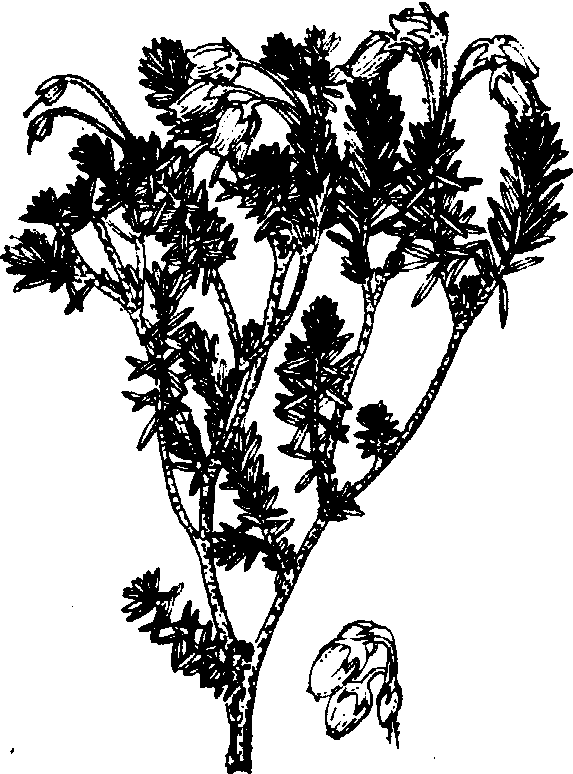松毛翠blue mountain heath
Phyllodocecaerulea,别名木母樱。杜鹃花科木母樱属常绿矮小灌木。染色体数2n=24。高10~30cm,多分枝;叶互生,呈螺旋状排列,条形,长5~10mm,边缘反卷,具细齿;花1~5朵生于枝顶,花冠钟形,粉红或紫堇色,花期6~7月;蒴果近球形,长3~4mm,7~8月果熟,种子细小。产中国东北和新疆阿尔泰山,俄罗斯、蒙古、朝鲜、日本和北欧、北美等地也有分布。多生长在海拔1700~2500m的高山草原。喜凉爽湿润气候,耐寒性强,适生于酸性(pH值5.2~6.9)土壤。用种子繁殖。松毛翠株形矮小,枝叶密集,且花美丽,具有较高的观赏价值,可用于园林绿化。

松毛翠
矮小灌木,高10—30厘米。多分枝。叶密生。花单一或2—5朵,生于枝端,粉红色。蒴果近球形,种子细小。产阿尔泰山区。花美丽,可观赏。具有水土保持作用。